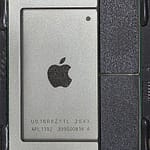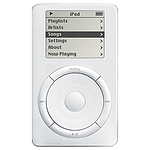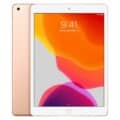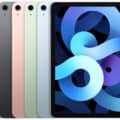- All Apple Devices
- iPod
- Apple iPod Shuffle 1st Generation
Apple iPod Shuffle 1st Generation


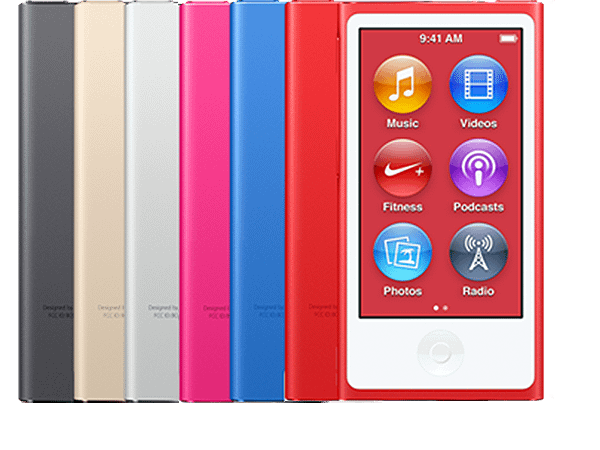
iPod Shuffle 1st Generation

Product Brand: Apple
2.5
Pros
- Small and compact design
- Affordable pricing
- Simple and easy to use interface
- Decent battery life
Cons
- Limited storage capacity
- No display screen for browsing through music
- Limited control options, only basic play/pause, skip, and shuffle
- No support for video playback or photos
Apple iPod Shuffle 1st Generation Review and Features
Released on January 11, 2005, during the Macworld expo, the first-generation iPod Shuffle weighed 0.78 ounces (22 g), resembled a pack of chewing gum sticks, and was designed to be easily loaded with a selection of songs and to play them in sequential or random order.
It used the SigmaTel STMP35xx system on a chip (SOC) and its software development kit (SDK) v2.6, a flash memory IC, and a USB rechargeable lithium cell.
It lacks a display, the trademark click wheel, playlist management features, and the games, address book, calendar, alarm, and notes capability of larger iPods. Due to the codec not being ported, it is incapable of playing Apple Lossless and AIFF audio files. The iPod Shuffle series also lacks a real-time clock and does not, therefore, update the “Last Played” value in iTunes.
The 1 GB model was advertised as capable of holding up to 240 songs (based on Apple’s estimate of four minutes per song and 128 kbit/s AAC encoding).
To cater to the limited capacity and intended usage scenario, two new features were added to iTunes: AutoFill, which selects songs at random from a user’s music library (or from a specific playlist) and copies as many as would fit into the iPod Shuffle’s storage – available as a supplement or replacement to manual selection; and an option to automatically transcode audio files of higher specifications to 128 kbps AAC-LC while transferring them (which would remain exclusive to the iPod Shuffle series until iTunes 9.1).
Furthermore, older versions of iTunes allowed an iPod Shuffle playlist to be viewed and changed while the unit is not connected; changes would be synchronized the next time the unit is connected. However, this functionality was removed in iTunes 7.
Due to superior audio technology in the SigmaTel STMP35xx SOC and SDK, the first generation had a better bass response than a fourth-generation iPod.
Full Technical Specifications
General Technical Specifications
| Device Type | Portable Media Player |
| Released | 11 January, 2005 |
| Status | Discontinued |
| Predecessor | iPod Mini |
| Successor | iPod Touch |
| Generation | 1st |
| Colors | White |
| System Requirements |
Mac system requirements Macintosh computer with USB port Mac OS X v10.2.8 or Mac OS X 10.3.4 and later (Mac OS X 10.3.6 or later recommended for use with low-power USB ports) Windows system requirements PC with USB port Windows 2000 with Service Pack 4 or later or Windows XP Home or Professional with Service Pack 2 or later |
| Input and Output |
USB connector 3.5-mm stereo headphone minijack |
| iPod's Processor Type | D-Major SMTP 3550 |
| iPod's Processor Speed | 75 MHz |
| RAM | 32 MB |
| iPod's Internal Memory |
512MB or 1GB USB flash drive Holds 120 or 240 songs in 128-Kbps AAC format Stores data via USB flash drive |
| Connectivity | USB 1.1, USB 2.0 |
| FM Radio Support | No |
| Audio Technology Features |
Audio Skip-free playback Frequency response: 20Hz to 20,000Hz MP3 (8 to 320 Kbps), MP3 VBR, AAC (8 to 320 Kbps), Protected AAC (from iTunes Music Store, M4A, M4B, M4P), Audible (formats 2, 3 and 4) and WAV Headphones Earbud-style headphones with 18-mm drivers using Neodymium transducer magnets Frequency response: 20Hz to 20,000Hz Impedance: 32 ohms |
| Headphone Type | 3.5mm Audio jack |
| Dimensions |
Height: 3.3 in. Width: .98 in. Depth: 0.33 in. |
| Weight | 0.78 oz (22 g) |
| Camera | No |
| SIM SIM (Subscriber Identity Module) is a small card that contains mobile network subscriber's account information. This allows the phone using the card to attach to a mobile network. The SIM card is most commonly associated with GSM and UMTS mobile networks. Moving a SIM card from one phone to another allows a subscriber to switch mobile phones without having to contact their mobile network carrier. SIM cards can also be used by a phone to store limited amounts of data, such as phone numbers and text messages. | No SIM |
| Battery |
Built-in rechargeable lithium-ion battery Playtime: Up to 12 hours when fully charged Standby time: 1 month when fully charged Charging via USB to computer system or power adapter Full-charge time: about 4 hours |
| Navigation | Four buttons on the front to navigate the playlist. |
Disclaimer Note
We can not guarantee that the information on this page is 101% correct.


